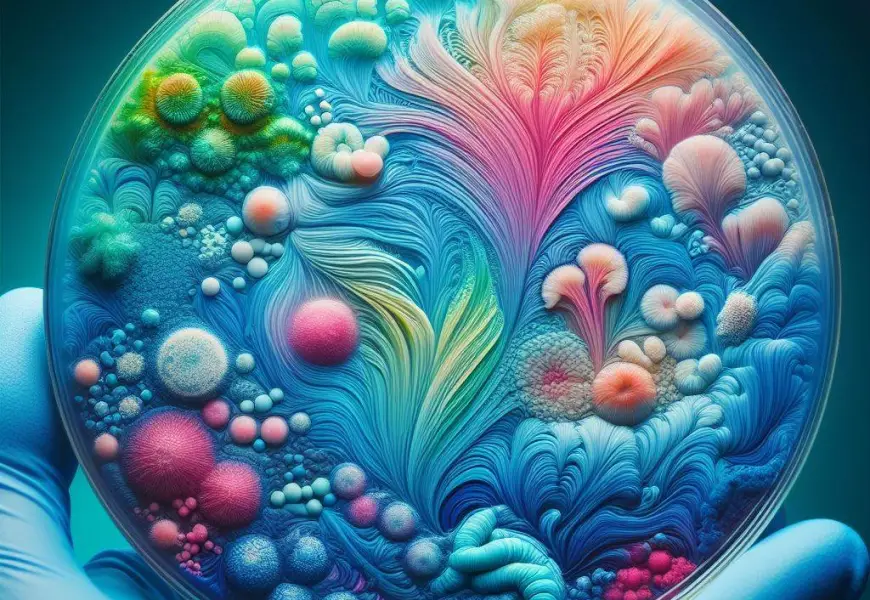In recent years, the fashion industry has been under increasing pressure to adopt sustainable practices. From eco-friendly fabrics to ethical manufacturing processes, consumers are demanding alternatives that minimize environmental impact. One innovative solution gaining traction is the use of bacteria to color clothes. This groundbreaking approach not only offers vibrant hues but also presents a sustainable alternative to conventional synthetic dyes. Let’s delve into how bacteria are transforming the landscape of textile coloring and why it’s a game-changer for sustainable fashion.
Bacterial Pigments: Nature’s Palette: Bacteria have long been recognized for their ability to produce an array of pigments with diverse colors and properties. These pigments are synthesized by bacteria as part of their metabolic processes and serve various functions, including protection from environmental stressors like UV radiation. Among the most notable bacterial pigments are carotenoids, anthocyanins, and indigo.
Carotenoids, for instance, are responsible for the vibrant oranges, yellows, and reds seen in nature. Bacteria such as Serratia marcescens and Deinococcus radiodurans produce these pigments, offering a renewable source of colorants for textiles. Similarly, anthocyanins, found in bacteria like Escherichia coli, contribute to shades of purple, blue, and red. Additionally, the bacterium Escherichia coli has been engineered to produce indigo, the prized pigment traditionally derived from plants like the indigofera species.
Sustainability of Bacterial Dyes:
The environmental benefits of using bacterial pigments for clothing dyes are manifold. Unlike synthetic dyes derived from petrochemicals, bacterial pigments are biodegradable and non-toxic, posing minimal harm to ecosystems. Moreover, bacteria can be cultivated using renewable resources such as agricultural waste or even wastewater, reducing the reliance on finite fossil fuels.
Furthermore, the production of bacterial pigments typically involves fermentation processes, which require less energy compared to traditional dyeing methods. This translates to lower carbon emissions and reduced water consumption, addressing two significant sustainability challenges in the fashion industry. Additionally, the use of bacterial pigments can promote circularity by enabling the recycling and reuse of textile materials without compromising color quality.
Social Implications and Economic Viability:
In addition to environmental benefits, the adoption of bacterial dyes holds promising social and economic implications. By embracing biotechnology in textile production, fashion brands can support local communities through the establishment of small-scale fermentation facilities. These facilities could provide employment opportunities and empower farmers to cultivate feedstock crops for bacterial fermentation, thereby fostering sustainable livelihoods.
Moreover, the versatility of bacterial pigments allows for customization and innovation in garment design, offering designers and consumers a broader palette of colors to choose from. This creative freedom not only enhances product differentiation but also encourages artistic expression and individuality in fashion.
Challenges and Future Directions:
Despite the promising potential of bacterial dyes, several challenges remain to be addressed. One such challenge is scaling up production to meet the demands of the global fashion industry while maintaining cost competitiveness with synthetic dyes. Additionally, ensuring consistency in colourfastness and durability is crucial to achieving widespread adoption among consumers and garment manufacturers.
Furthermore, continued research is needed to optimize fermentation processes, enhance pigment yield, and develop strains of bacteria with desirable properties for textile applications. Collaborations between biotechnologists, textile engineers, and fashion designers will be essential to drive innovation and overcome technical barriers.
The utilization of bacteria to colour clothes represents a paradigm shift in the fashion industry towards sustainability and innovation. By harnessing the natural pigments produced by bacteria, fashion brands can reduce their environmental footprint, support local economies, and inspire a new era of eco-conscious design. As consumer awareness of sustainability grows, bacterial dyes offer a compelling solution to meet the demands for ethical and environmentally friendly fashion. In the quest for a more sustainable future, bacteria may very well prove to be the unsung heroes of the textile industry.



